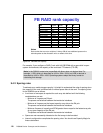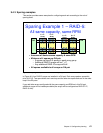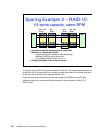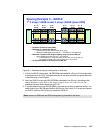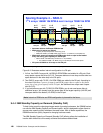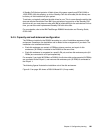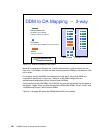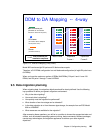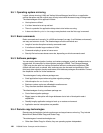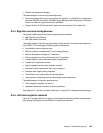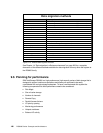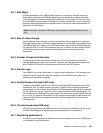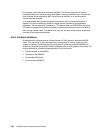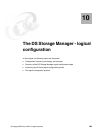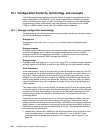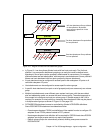184 DS8000 Series: Concepts and Architecture
9.5.1 Operating system mirroring
Logical volume mirroring (LVM) and Veritas Volume Manager have little or no application
service disruption and the original copy will stay intact while the second copy is being made.
The disadvantages of this approach include:
Host cycles are utilized.
It is labor intensive to set up and test.
There is a potential for application delays due to dual writes occurring.
It does not allow for point-in-time copy or easy backout once the first copy is removed.
9.5.2 Basic commands
Basic commands such as cpio (in a UNIX environment) or copy (in a Windows environment)
are easy and common to use. The disadvantages of basic commands are:
Length of service disruption varies by commands used.
It is tedious to handle large numbers of LUNs.
Command scripting is prone to human error.
Security file level access issues can arise, depending on which commands used.
9.5.3 Software packages
You can employ data migration, backup, and restore packages, as well as database tools, to
migrate data. An example of a data migration package is BRMS. Tivoli Storage Manager
(TSM) may also be used in a backup and restore fashion to achieve data migrations. DB2
utilities and tools such as unload, load, and copy can also be used to migrate data. Other
third-party data migration, backup and restore, and database packages are available. Contact
the respective vendor for further assistance.
The advantages of using software packages are:
Small application impact when using data migration package.
Little disruption for non-database files.
Backup or restore cycles are offloaded to another server.
They are often standard database utilities.
The disadvantages of using a software package are:
Cost of data migration package.
Bigger impact or disruption with large databases due to lack of checkpoint-restart
capabilities.
Possibly lengthy application outage to back up or restore environment.
Application service interruptions are possible.
9.5.4 Remote copy technologies
Remote copy technologies include synchronous and asynchronous mirroring. They include
Metro Mirror, Metro/Global Copy and Global Copy.
The advantages of remote technologies are:
Other than Global Copy for zSeries, they are operating system independent.



